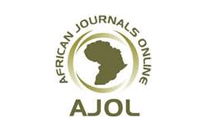Mansoura Veterinary Medical Journal
Document Type
Original Article
Keywords
Heavy metal residues, Fish muscles, Dredging operations, Maximum permissible limits.
Abstract
OBJECTIVES: The current study aimed to evaluate the effectiveness of cleanup and dredging operations in Manzala Lake on the levels of mercury, arsenic, lead, and cadmium in fish muscles and compare them with the concentrations previously recorded in the same lake before treatment. METHODS: A total of 180 fish samples, including 60 each of Nile tilapia (Oreochromis niloticus), flathead grey mullet (Mugil cephalus), and African catfish (Clarias gariepinus), were analyzed using atomic absorption spectrophotometry. RESULTS: The mean concentrations (mg/kg) of Hg, As, Pb, and Cd in tilapia were 0.01 ± 0.03, 3.16 ± 0.35, 1.01 ± 0.16, and 0.12 ± 0.02, respectively; in mullet were 0.15 ± 0.03, 4.25 ± 0.47, 0.87 ± 0.15, and 0.05 ± 0.01, respectively; and in catfish were 0.29 ± 0.05, 4.74 ± 0.38, 0.95 ± 0.15, and 0.06 ± 0.01, respectively. The heavy metal values in the majority of the tested fish samples exceeded the permissible limits established by Egyptian and international standards. The pollution levels of Hg, As, Pb, and Cd in Manzala Lake did not decrease after the recent cleanup and dredging operations. CONCLUSION: This finding indicates that the fish species caught from Manzala Lake after the recent cleanup and dredging operations may carry a potential risk to public health. Consequently, monitoring the effectiveness of cleanup and dredging is necessary to evaluate pollution levels over time and protect human health.
How to Cite This Article
Rahmo, Heba; Abd-Elghany, Samir; and Zakaria, Amira Ibrahim
(2024)
"Effectiveness of cleanup and dredging operations on some heavy metal residues in fish flesh from Manzala lake, Egypt,"
Mansoura Veterinary Medical Journal: Vol. 25:
Iss.
1, Article 3.
DOI: https://doi.org/10.35943/2682-2512.1227
Receive Date
28/10/2023
Accept Date
18/01/2024
Publication Date
2024






